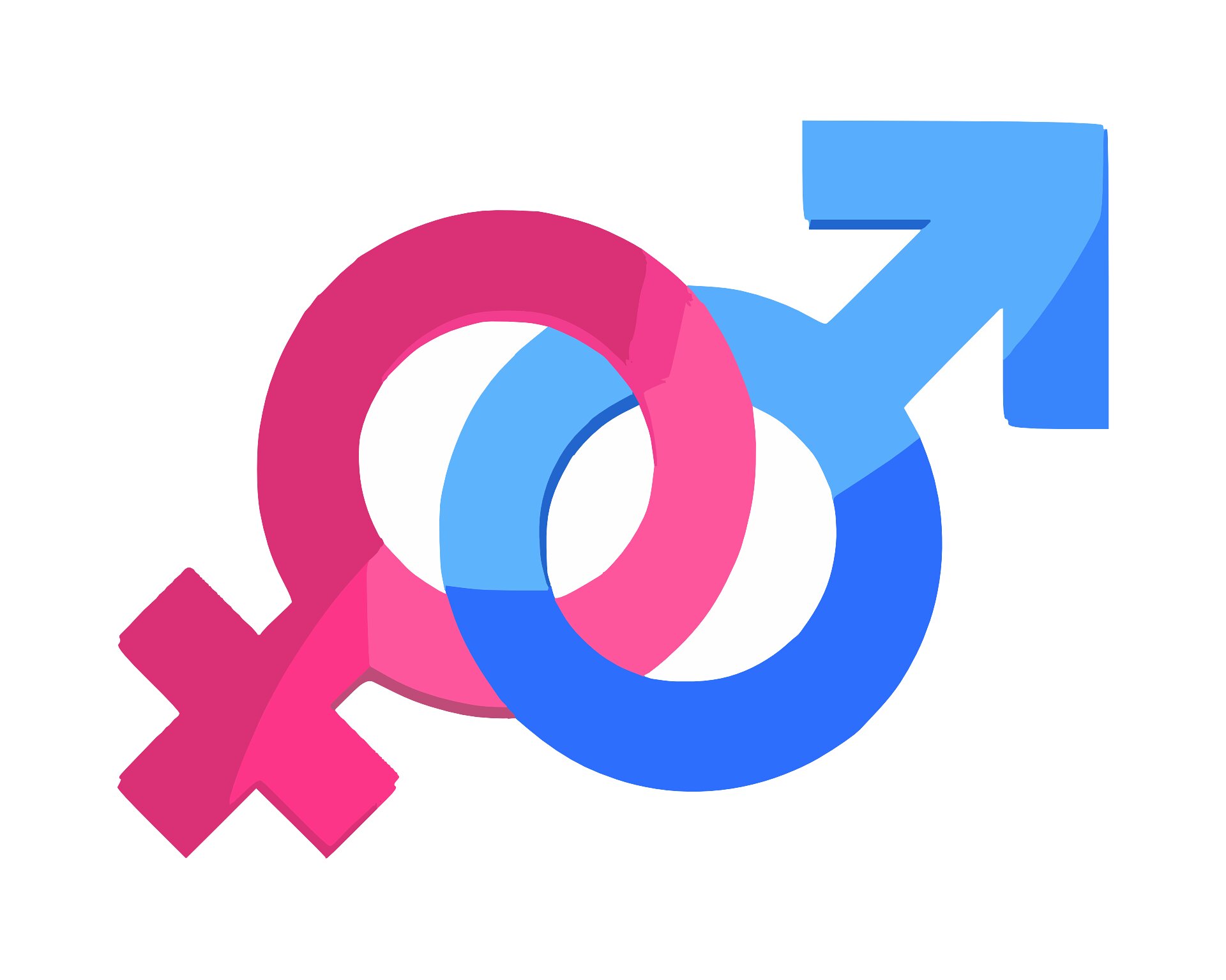#Global study reveals stark differences between females and males in disease burden causes

Table of Contents

Globally, there are substantial differences between females and males (aged 10 and older) when it comes to health, with limited progress in bridging these health gaps over the past 30 years, according to a new study examining the disparities in the 20 leading causes of disease burden between females and males, across ages and regions, published in The Lancet Public Health.
Non-fatal conditions that lead to health loss through illness and disability, including musculoskeletal conditions, mental health conditions, and headache disorders particularly affect females globally, while males are disproportionally affected by conditions that lead to more premature death, such as COVID-19, road injuries, cardiovascular diseases, and respiratory and liver diseases.
Importantly, these health differences between females and males continue to grow with age, leaving females with higher levels of illness and disability throughout their lives, because they tend to live longer than males.
The authors explain that “sex” refers to the biological and physiological characteristics of females and males, while “gender” pertains to the socially constructed roles, behaviors, and identities of women and men—as well as gender-diverse individuals—which are also shaped by historical and cultural contexts. These two factors interact, leading to different health and disease experiences among men and women.
The study is a call to action for countries to increase their reporting of sex and gender data and to use these data to overhaul their approach to health. It clearly highlights the need for sex- and gender-informed strategies that recognize the unique health challenges faced by females and males.
The modeling research uses data from the Global Burden of Disease Study 2021 to compare the total number of life years lost to illness and premature death—a measurement known as disability-adjusted life years (DALYs)—for the 20 leading causes of disease in females and males older than 10 years at the global level and in seven world regions, between 1990 and 2021.
The authors note that the analysis does not include sex-specific health conditions, such as gynecological conditions or prostate cancers, but does examine the health differences between conditions affecting both females and males.
“The timing is right for this study and call to action—not only because of where the evidence is now, but because COVID-19 has starkly reminded us that sex differences can profoundly impact health outcomes,” says senior author Dr. Luisa Sorio Flor at the Institute for Health Metrics and Evaluation (IHME), University of Washington, U.S.
“One key point the study highlights is how females and males differ in many biological and social factors that fluctuate and sometimes accumulate over time, resulting in them experiencing health and disease differently at each stage of life and across world regions. The challenge now is to design, implement, and evaluate sex- and gender-informed ways of preventing and treating the major causes of morbidity and premature mortality from an early age and across diverse populations.”
Males face a higher disease burden overall
The analysis estimates that for 13 out of the top 20 causes of disease burden, including COVID-19, road injuries, and a range of cardiovascular, respiratory and liver diseases, health loss was higher in males than females in 2021.
For example, overall COVID-19 was the leading cause of health loss in 2021, with males experiencing 45% more health loss from COVID-19 than females (3,978 vs. 2,211 age-standardized DALYs per 100,000). COVID-19 disproportionately affected men in all regions, with the widest sex difference observed in sub-Saharan Africa (10,559 vs. 5,565 DALYs per 100,000) and Latin America and the Caribbean (8,124 vs. 4,473 DALYs per 100,000).
Ischemic heart disease yielded the second largest absolute difference in health loss between females and males, with males experiencing 45% more health loss from heart disease compared to females (3,599 vs. 1,987 DALYs per 100,000) in 2021. The greatest difference was seen in Central Europe, Eastern Europe, and Central Asia, where males experienced a 49% higher burden than females (6,789 vs. 3,456 DALYs per 100,000).
For conditions with a disproportionate burden in males, such as ischemic heart disease, lung cancer, and chronic kidney disease, sex differences tend to be small at young ages and widen over the life course. The exception is the disproportionate toll of road injuries on young males (aged 10-24 years) in all world regions.
“Our findings shine a light on the significant and unique health challenges faced by males,” says co-lead author Dr. Vedavati Patwardhan from the University of California, San Diego, U.S. “Among these challenges are conditions that lead to premature deaths, notably in the form of road injuries, cancers, and heart disease. We need national health plans and strategies to address the health needs of men throughout their lives, including interventions targeting behavioral risks such as alcohol use and smoking that typically begin at a young age.”
The authors stress that progress on health strategies for men has been slow. Globally, new initiatives for men are now being rolled out, including the 2018 Strategy on the Health and Well-Being of Men in the WHO European Region, which was ratified by over 50 member countries. But to date only a handful of countries (including Australia, Ireland, Iran, Brazil, Malaysia, Mongolia, and South Africa) have designated national-level policies to address men’s health.
Disproportionate toll of disability-causing conditions among females
Among the conditions evaluated, the study suggests that the biggest contributors to health loss globally disadvantaging females are low back pain, depressive disorders, headache disorders, anxiety disorders, other musculoskeletal disorders, Alzheimer’s disease and other dementias, and HIV/AIDS. These conditions predominantly contribute to illness and disability throughout life as opposed to leading to premature death.
The largest absolute difference in health loss disadvantaging females was seen for low back pain, with DALY rates more than a third higher for females than for males in 2021 (1,265 vs. 787 DALYs per 100,000). Regionally, this gap was most pronounced in South Asia, where rates were over 50% higher in females (1,292 vs. 598 DALYs per 100,000), and in Central Europe, Eastern Europe, and Central Asia, where female rates were about 30% higher (1,807 vs. 1,256 DALYs per 100,000).
Mental health conditions disproportionately impact females in all world regions. For example, health loss caused by depressive disorders was over a third higher among females than males (1,019 vs. 671 DALYs per 100,000) globally in 2021, with the widest differences disadvantaging females seen in high-income countries (1,300 vs. 747 DALYs per 100,000) and countries in Latin America and the Caribbean (1,139 vs. 624 DALYs per 100,000).
For conditions with the greatest gap disadvantaging females, such as mental health conditions and musculoskeletal disorders, the differences in health loss between females and males begin early in life and continue to intensify with age.
“Large causes of health loss in women, particularly musculoskeletal disorders and mental health conditions, have not received the attention that they deserve,” says co-lead author Gabriela Gil from IHME. “It’s clear that women’s health care needs to extend well beyond areas that health systems and research funding have prioritized to date, such as sexual and reproductive concerns.”
She adds, “Conditions that disproportionately impact females in all world regions, such as depressive disorders, are significantly underfunded compared with the massive burden they exert, with only a small proportion of government health expenditure globally earmarked for mental health conditions. Future health system planning must encompass the full spectrum of issues affecting females throughout their lives, especially given the higher level of disability they endure and the growing ratio of females to males in aging populations.”
Sex- and gender-responsive approaches to health
These global differences in health loss between females and males have been largely consistent for the past 30 years, but for some diseases, such as diabetes, the difference in DALY rates between females and males nearly tripled between 1990 (56.1 more DALYs per 100,000 among males) and 2021 (142.7 more DALYs per 100,000 among males).
At the same time, there has been a disproportionate rise in global health loss caused by depressive disorders, anxiety, and some musculoskeletal disorders disadvantaging females, highlighting that the burden of chronic conditions experienced by females continues to grow.
According to Dr. Sorio Flor, “This report clearly shows that over the past 30 years global progress on health has been uneven. Females have longer lives but live more years in poor health, with limited progress made in reducing the burden of conditions leading to illness and disability, underscoring the urgent need for greater attention to non-fatal consequences that limit women’s physical and mental function, especially at older ages. Similarly, males are experiencing a much higher and growing burden of disease with fatal consequences.”
She continues, “This kind of critical, comparable, and comprehensive research is important, both to understand the magnitude and distribution of the diverse and evolving health needs of females and males around the world and to identify key opportunities for health gain at all stages of life.”
The authors stress that the health differences identified begin to emerge in adolescence, coinciding with a critical time when gender norms and attitudes intensify and puberty reshapes self-perceptions. This pattern underscores the need for targeted responses from an early age to prevent the onset and exacerbation of health conditions and for adopting a life course approach when planning for health systems so that they are well-equipped to handle the needs of the populations they serve.
Ultimately, unraveling the roots of these health differences by collecting and reporting sex-specific data (and gender identity-specific data when possible) and promoting gender-sensitive research is central to health policy decisions that offer the best opportunities for progress towards an equitable and healthy future for all.
But despite repeated commitments from international and funding agencies, there remain substantial gaps in the availability of sex-disaggregated data. Even for COVID-19, around 60% of countries did not consistently breakdown data by sex. And information on gender identity is even more limited.
Dr. Patwardhan adds, “Our analysis also highlights the need for targeted policies and planning to address the health needs of diverse populations. Without granular insights on risk behaviors, social dynamics, economic conditions, and access to health care for all people in various parts of the world, the systemic barriers that sustain health inequities will remain.”
The authors note some important limitations, including that while the study uses the best available data, estimates are constrained by the quantity and quality of past data as well as systemic biases present in epidemiological data—such as recall bias from self-reported data and the under-representation of population groups—which may affect the accuracy of the health differences described.
Additionally, the analysis was limited to data on females and males and could not produce estimates for gender-diverse or sex-diverse groups, highlighting the need for more data spanning the sex and gender spectrums. Finally, the study did not include female- and male-specific conditions such as gynecological diseases and prostate cancers to allow for cross-population comparisons and to highlight areas where sex-and gender-responsive interventions could have substantial health benefits.
Writing in a linked Comment, Professor Sarah Hawkes from the Institute of Global Health, University College London, UK (who was not involved in the study) stresses that too often sex-disaggregated data are overlooked or simply ignored in decision-making processes. She writes, “Even with many decades of empirically robust and rigorous efforts by GBD to report sex differences, we have not seen the same level of attention paid to the question of integrating gender-responsiveness into responses aiming to reduce DALYs or lengthen life expectancy.
“Yet it is gender—i.e., the unequal distribution of power and privilege in the systems and structures determining health and well-being—that is determining a large part of the observed health and life expectancy differences between people. It is beyond time in public health politics, policies, programs, and practices to ensure we move from sex-disaggregation to gender responsiveness that tackles the root causes of health inequities.”
Differences across the lifespan between females and males in the top 20 causes of disease burden globally: a systematic analysis of the Global Burden of Disease Study 2021, The Lancet Public Health (2024). DOI: 10.1016/S2468-2667(24)00049-5
Citation:
Global study reveals stark differences between females and males in disease burden causes (2024, May 1)
retrieved 2 May 2024
from https://medicalxpress.com/news/2024-05-global-reveals-stark-differences-females.html
This document is subject to copyright. Apart from any fair dealing for the purpose of private study or research, no
part may be reproduced without the written permission. The content is provided for information purposes only.
If you liked the article, do not forget to share it with your friends. Follow us on Google News too, click on the star and choose us from your favorites.
If you want to read more Like this articles, you can visit our Science category.



